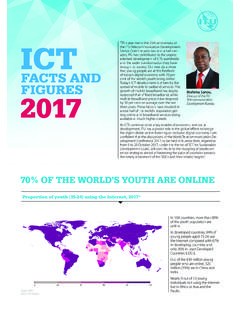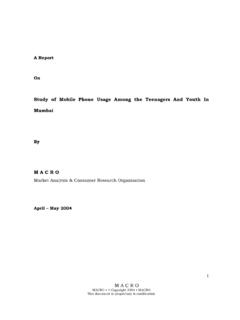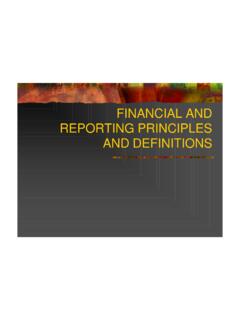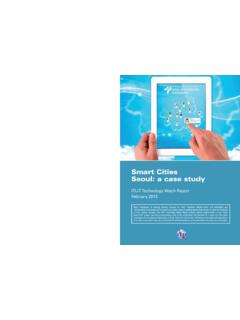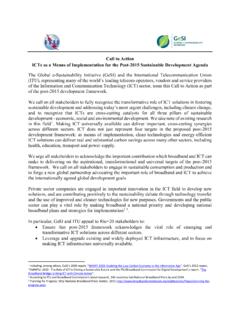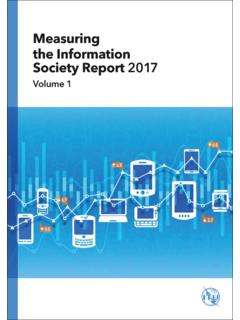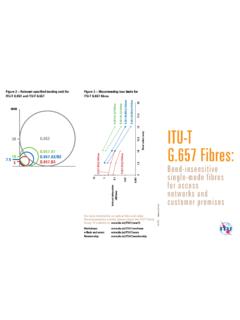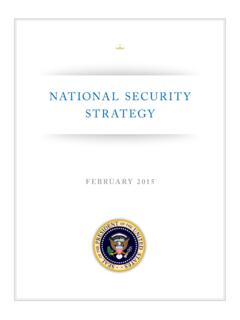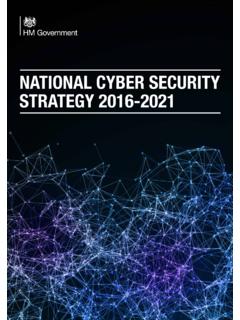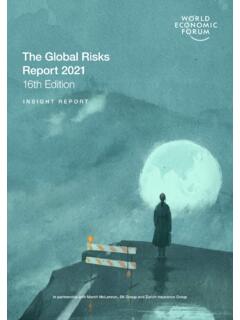Transcription of Understanding cybercrime: Phenomena, challenge and legal ...
1 09/2012 Understanding CYBERCRIME: PHENOMENA, challenges AND legal RESPONSE September 2012 Understanding cybercrime: PHENOMENA, challenges AND legal RESPONSECYBERCRIMES eptember 2012telecommunication Development SectorPrinted in SwitzerlandGeneva, 2012 International Telecommunication UnionTelecommunication Development BureauPlace des NationsCH-1211 Geneva Understanding cybercrime: Phenomena, challenges and legal response September 2012 The ITU publication Understanding cybercrime: phenomena, challenges and legal response has been prepared by Prof. Dr. Marco Gercke and is a new edition of a report previously entitled Understanding Cybercrime: A Guide for Developing Countries. The author wishes to thank the Infrastructure Enabling Environment and E-Application Department, ITU Telecommunication Development Bureau. This publication is available online at: ITU 2012 All rights reserved.
2 No part of this publication may be reproduced, by any means whatsoever, without the prior written permission of ITU. Understanding cybercrime: Phenomena, challenges and legal response i Table of contents Page Purpose .. iii 1. Introduction .. 1 Infrastructure and services .. 1 Advantages and risks .. 2 cybersecurity and cybercrime .. 2 International dimensions of cybercrime .. 3 Consequences for developing countries .. 4 2. The phenomena of cybercrime .. 11 Definitions .. 11 Typology of cybercrime .. 12 Development of computer crime and cybercrime .. 12 Extent and impact of cybercrime offences .. 14 Offences against the confidentiality, integrity and availability of computer data and systems .. 16 Content-related offences .. 21 Copyright and trademark related offences .. 27 Computer-related offences .. 29 Combination offences.
3 33 3. The challenges of fighting cybercrime .. 74 Opportunities .. 74 General challenges .. 75 legal challenges .. 82 4. Anti-cybercrime strategies .. 97 Cybercrime legislation as an integral part of a cybersecurity strategy .. 97 A cybercrime policy as starting point .. 98 The role of regulators in fighting cybercrime .. 101 5. Overview of activities of regional and international organizations .. 114 International approaches .. 114 Regional approaches .. 123 Scientific and independent approaches .. 144 The relationship between regional and international legislative approaches .. 144 The relationship between international and national legislative approaches .. 145 6. legal response .. 169 Definitions .. 169 Substantive criminal law .. 177 Digital evidence .. 225 Justisdiction .. 234 Procedural law .. 238 International cooperation .. 266 Liability of Internet providers .. 280 7. [Keyword Index].
4 Error! Bookmark not deUnderstanding cybercrime: Phenomena, challenges and legal response iii Purpose The purpose of the ITU report Understanding Cybercrime: Phenomena, challenges and legal Response is to assist countries in Understanding the legal aspects of cybersecurity and to help harmonize legal frameworks. As such, the report aims to help developing countries better understand the national and international implications of growing cyberthreats, to assess the requirements of existing national, regional and international instruments, and to assist countries in establishing a sound legal foundation. This report provides a comprehensive overview of the most relevant topics linked to the legal aspects of cybercrime and focuses on the demands of developing countries. Due to the transnational dimension of cybercrime, the legal instruments are the same for developing and developed countries.
5 However, the references used were selected for the benefit of developing countries, in addition to a broad selection of resources provided for a more in-depth study of the different topics. Whenever possible, publicly available sources were used, including many free-of-charge editions of online law journals. The report contains six main chapters. After an introduction (Chapter 1), it provides an overview of the phenomena of cybercrime (Chapter 2). This includes descriptions of how crimes are committed and explanations of the most widespread cybercrime offences such as hacking, identity theft and denial-of-service attacks. An overview of the challenges is also provided, as they relate to the investigation and prosecution of cybercrime (Chapters 3 and 4). After a summary of some of the activities undertaken by international and regional organizations in the fight against cybercrime (Chapter 5), it continues with an analysis of different legal approaches with regard to substantive criminal law, procedural law, digital evidence, international cooperation and the responsibility of Internet service providers (Chapter 6), including examples of international approaches as well as good-practice examples from national solutions.
6 This publication addresses the first of the seven strategic goals of the ITU Global cybersecurity Agenda (GCA), which calls for the elaboration of strategies for the development of cybercrime legislation that is globally applicable and interoperable with existing national and regional legislative measures, as well as addressing the approach to organizing national cybersecurity efforts under ITU-D Study Group 1 Question 22/1. Establishing the appropriate legal infrastructure is an integral component of a national cybersecurity strategy. The related mandate of ITU with regard to capacity building was emphasized by Resolution 130 (Rev. Guadalajara, 2010) of the ITU Plenipotentiary Conference, on Strengthening the role of ITU in building confidence and security in the use of information and communication technologies. The adoption by all countries of appropriate legislation against the misuse of ICTs for criminal or other purposes, including activities intended to affect the integrity of national critical information infrastructures, is central to achieving global cybersecurity .
7 Since threats can originate anywhere around the globe, the challenges are inherently international in scope and require international cooperation, investigative assistance, and common substantive and procedural provisions. Thus, it is important that countries harmonize their legal frameworks to combat cybercrime and facilitate international cooperation. Disclaimer regarding hyperlinks The document contains several hundred links to publically available documents. All references were checked at the time the links were added to the footnotes. However, no guarantee can be provided that the up-to-date content of the pages to which the links relate are still the same. Therefore the reference wherever possible also includes information about the author or publishing institution, title and if possible year of the publication to enable the reader to search for the document if the linked document is not available anymore.
8 Understanding cybercrime: Phenomena, challenges and legal response 1 1. Introduction Bibliography (selected): Barney, Prometheus Wired: The Hope for Democracy in the Age of Network Technology, 2001; Comer, Internetworking with TCP/IP Principles, Protocols and Architecture, 2006; Dutta/De Meyer/Jain/Richter, The Information Society in an Enlarged Europe, 2006; Gercke, The Slow Wake of a Global Approach Against Cybercrime, Computer Law Review International 2006, page 141 et seq.; Hayden, Cybercrime s impact on Information security, Cybercrime and Security, IA-3; Kellermann, Technology risk checklist, Cybercrime and Security, IIB-2; Masuda, The Information Society as Post-Industrial Society, 1980; Sieber, The Threat of Cybercrime, Organised crime in Europe: the threat of Cybercrime, 2005; Tanebaum, Computer Networks, 2002; Wigert, Varying policy responses to Critical Information Infrastructure Protection (CIIP) in selected countries, Cybercrime and Security, IIB-1; Yang, Miao, ACM International Conference Proceeding Series; Vol.
9 113; Proceedings of the 7th International Conference on Electronic Commerce, page 52-56; Zittrain, History of Online Gatekeeping, Harvard Journal of Law & Technology, 2006, Vol. 19, No. 2. Infrastructure and services The Internet is one of the fastest-growing areas of technical infrastructure Today, information and communication technologies (ICTs) are omnipresent and the trend towards digitization is growing. The demand for Internet and computer connectivity has led to the integration of computer technology into products that have usually functioned without it, such as cars and Electricity supply, transportation infrastructure, military services and logistics virtually all modern services depend on the use of Although the development of new technologies is focused mainly on meeting consumer demands in western countries, developing countries can also benefit from new With the availability of long-distance wireless communication technologies such as WiMAX5 and computer systems that are now available for less than USD 2006, many more people in developing countries should have easier access to the Internet and related products and The influence of ICTs on society goes far beyond establishing basic information infrastructure.
10 The availability of ICTs is a foundation for development in the creation, availability and use of network-based E-mails have displaced traditional letters9; online web representation is nowadays more important for businesses than printed publicity materials;10 and Internet-based communication and phone services are growing faster than landline The availability of ICTs and new network-based services offer a number of advantages for society in general, especially for developing countries. ICT applications, such as e-government, e-commerce, e-education, e-health and e-environment, are seen as enablers for development, as they provide an efficient channel to deliver a wide range of basic services in remote and rural areas. ICT applications can facilitate the achievement of millennium development targets, reducing poverty and improving health and environmental conditions in developing countries.
